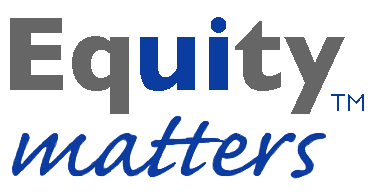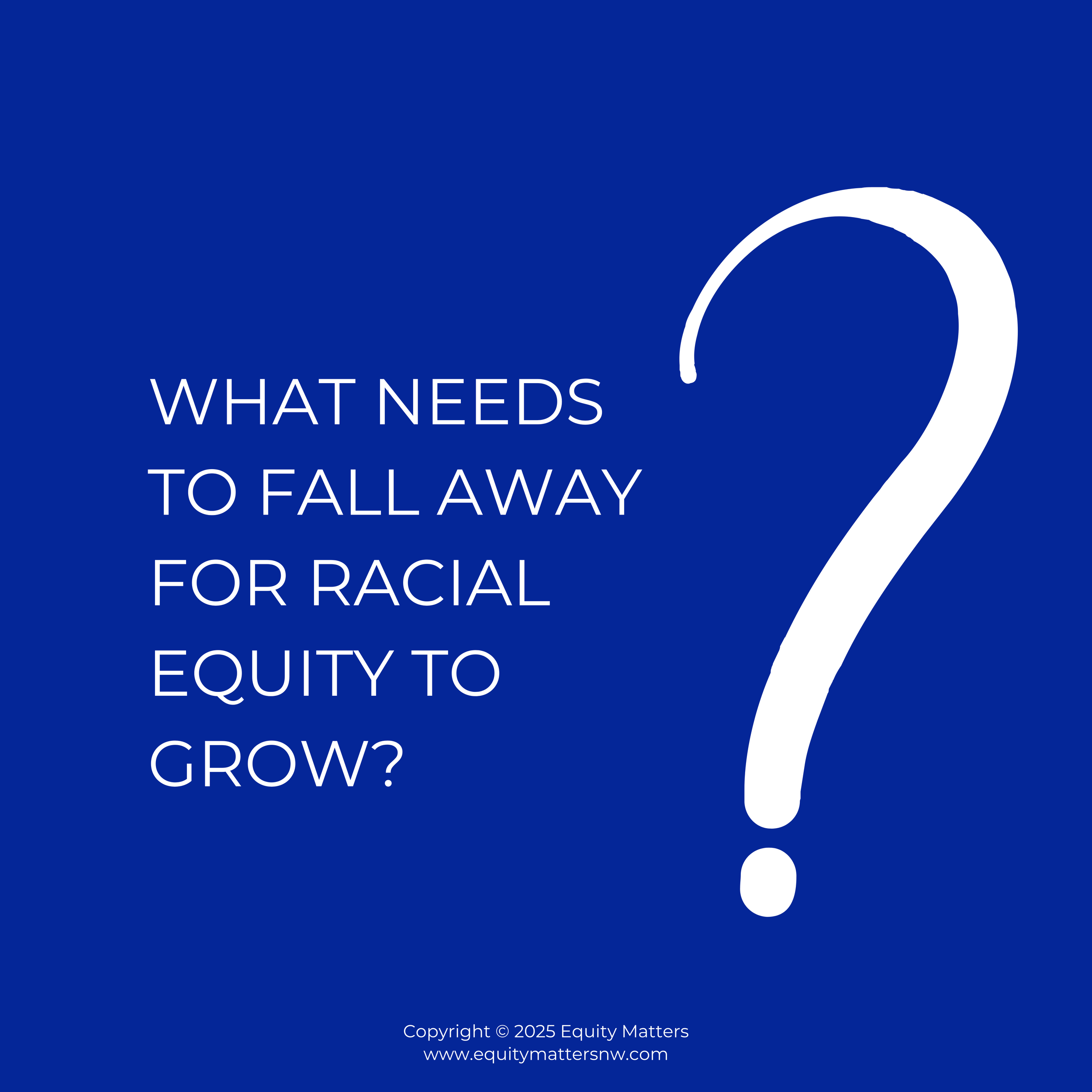What Needs to Fall Away for Racial Equity to Grow?
Our blog is a space to explore the hard questions that move organizations toward real change. Grounded in the belief that racial equity must live in both culture and daily practice, we share stories, tools, and reflections that help bridge values with action. From internal leadership shifts to community-rooted strategies, we highlight the everyday work of building racial equity, one decision, one relationship, one breakthrough at a time.
October's blogging prompt comes from LaToya.
Fall has a way of reminding us that growth requires letting go. The trees do not resist change; they release what is no longer needed to make space for what comes next. The same truth applies to racial equity work. We often focus on adding new trainings, new strategies, and new tools, yet rarely pause to ask what needs to fall away. What outdated habits, inequitable traditions, or unhelpful comforts are we still holding onto?
With each season, there is a sense of renewal that I inherently feel. In preparation for fall, I’ve done the expected tasks: bringing out warmer clothes, refreshing my home, and stocking up on fall treats. But the most important task has been slowing down and creating space to think about what I hope to accomplish in the months ahead.
This reflection prompted me to think about the connection between seasons and our commitment to racial equity. If this is a period of refresh and renewal, what would I like to see happen for this critical work to flourish? I offer the following:
Explicitly connect and communicate systemic racism = systemic power
Identify opportunities to build collective knowledge and take action to dismantle systems that uphold racism.
Nothing about us without us
Center communities of color in all work, shared power in action!
Confront white supremacists’ ways of knowing and doing
Elevate the voices and teachings from our ancestors, elders, and community stewards
Think and act systemically
If we aren’t naming root causes of racism, we are not doing the work.
Language is power
Name the work we are doing and what we are working towards.
Fall is a time for transition and change. To make space for equity, organizations must let go of the illusion that change can happen without discomfort. True transformation challenges systems, power, and habits that have long gone unquestioned. Discomfort is not a sign of failure, it’s part of growth.
Performative gestures and perfectionism must fall away too. Racial equity isn’t a statement or a checklist—it’s a continuous practice of reflection, accountability, and repair. Waiting to “get it right” often keeps progress from happening at all.
This season invites reflection:
What policies, habits, or fears are we clinging to that block transformation?
What could grow if we finally let them go?
Racial equity can’t grow in crowded soil. We must clear space, release what no longer serves, and trust that letting go is the first step toward something better taking root.
Happy fall! I always struggle with the transition from summer to autumn. I feel the loss of light and warmth in my bones, most noticeably during my bike rides. But once I’ve mourned that loss, I can turn my attention to the beauty and change that only fall offers.
This year, my toddler is finding her words, which means I notice more along the way: trees so orange they look like fire, neighborhood kids tossing leaves into the wind, a surprising range of pumpkins dotting porches, and fall décor that spans from metal chickens to Elmo.
Much like the seasons, our racial equity work needs cycles of renewal. Yet too often, organizations cling to familiar patterns long after they’ve stopped serving us. A participant in a recent training put it perfectly: “We cling to practices we know don’t work, because we fear change might bring us practices that still don’t work.”
That fear keeps many organizations immobilized, holding tight to comfort instead of leaning into transformation. These practices can feel uncomfortable, like wearing a swimsuit during winter, or warm clothes during summer.
Ironically, most organizations can easily name the practices that need to fall away: an overreliance on training, making equity so broad that it loses focus, pitting equity issues against each other, performing equity rather than practicing it, and measuring outputs instead of outcomes.
But one pattern worth spotlighting is individualizing collective work—the idea that one person’s experience stands in for everyone’s. You hear this when someone says, “I haven’t benefited from the equity work,” or when dominant-group members, such as white staff, share that they no longer feel a sense of belonging. These reactions are real and deserve reflection, but when they drive the narrative, they can distort the purpose of collective change.
A related practice that reinforces this individual lens is evaluating equity primarily through perception surveys. Of course, perceptions matter, especially those from historically excluded communities. But when perception becomes the only measure, it risks centering comfort over accountability. Racial equity is not just about how we feel; it’s about how systems function and who they serve.
As we enter this season of letting go, maybe it’s time to ask:
What practices, habits, or fears need to fall away so racial equity can take deeper root where we work, lead, and live?
We invite you to pause, reflect, and name one thing—large or small—that your team could release to make space for new growth. Then share it with us or start a conversation within your organization. Change, after all, begins with the courage to clear space.
If our equity tools, blog posts, or shared resources have added value to your work, consider leaving a contribution. Your support powers this work and fuels the creation of more racial justice-focused tools.

